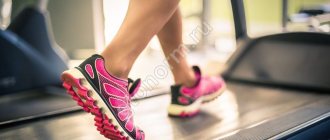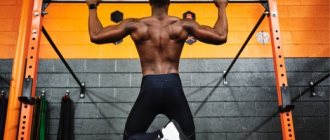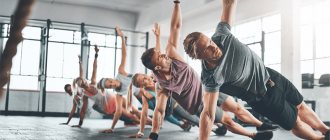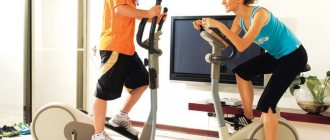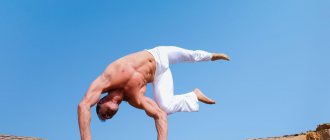Is it possible to compare?
To help you decide which of running and walking is better, which is more effective, we suggest analyzing both types of movement separately, identifying the common features and identifying the differences. Then it will be easier to understand what is needed and why. Go!
Walking
This is our main movement - moving the legs relative to a horizontal surface. You can walk slowly, barely moving your legs, at a speed of 1–2 km per hour. You can go faster; the average speed for walking is considered to be 5–6 kilometers per hour. And you can walk very quickly, up to race walking, the speed of which exceeds 10 kilometers per hour.
By the way, physiological indicators during race walking are similar to the parameters of the body during jogging and even faster running.
We conclude that you can walk in different ways. And each method and speed will have its own effect.
Fast walking is useful for 1 hour a day. Anyone who accumulates a total of 1 hour of walking per day and thinks that he is getting the maximum benefit is a little wrong. When they say that walking an hour a day is beneficial, they mean continuous walking. This is a cardio workout. Remember how you breathe when walking intensively - accelerated. And how your heart behaves – it speeds up. Thus, brisk walking, like running, can provide cardio exercise.
There is such a type as Nordic walking, with sticks in hands. Each step is accompanied by alternate raising and lowering of hands with sticks. This is healthier than regular walking, as the arm muscles are involved in the work. Hand movements make breathing easier, the lungs open more. This means that the body receives better aeration than when walking without poles.
For sporting purposes, it is best to walk in forest areas and parks. In general, it is better to walk where there are no cars, where there is still fresh air. You should not walk where there are strong odors, for example, near poultry and livestock farms. An unpleasant odor can be harmful to your well-being; you need to enjoy the air!
Walking will help you lose weight. To start losing weight, all you need is brisk walking and proper nutrition. Progress will improve, you just need to be patient.
Summarize
Running is much more dangerous than walking due to the heavy load on the joints. The natural protection of the joints is the muscular corset, as well as elastic ligaments - all this must first be developed through regular training. It is precisely because of the lack of trained muscles and ligaments, natural stabilizers when running, that it is recommended to enter running gradually, through walking.
It is also advisable to start training with walking because of the significant load on the heart and blood vessels during running. For an untrained heart, running can be an unnecessarily difficult test, as it is for other muscles in an unprepared body.
Run
Running is also different. You can jog, or you can do sprint races at speeds of up to 30 kilometers per hour. Definitely, running has a good advantage over walking - the possibility of interval training.
No matter how fast a person walks, to further accelerate he starts running. Therefore, you cannot extract the maximum load from walking even for a second. But you can get this from running. You need to run as quickly as possible for at least 20–30 seconds, then slow down and restore your breathing. You can’t stop completely at this moment, jog, slow down as much as possible if necessary, but run.
Jogging in the morning has a much more active effect on the body than a calm walk. The body will not wake up from a walk; on the contrary, it will want to sleep more. After all, walking doesn’t raise your blood pressure or speed up your heart rate so much that you wake up. But if you run, all this will easily change, to the point that you will become out of breath.
And how important running is for losing weight! Therefore, if you compare running and walking and talk about what is better for losing weight, the choice is definitely in favor of running.
What is healthier? Here the answers are very ambiguous, we will analyze this further. But here's what you can say for sure about running:
- Running burns more calories than walking.
- Running definitely expends more energy, makes your heart work faster, and your lungs breathe stronger and deeper.
- It is running that makes us sweat, it trains anaerobic endurance.
What is healthier: running or walking?
Despite the apparent similarity in the nature of the movements, walking and running are different loads for the body. It follows from this that one of the options will win in one aspect, but lose in another. Therefore, when choosing, it is necessary to take into account the pros and cons of these methods of transportation and the nature of the load they exert.
The benefits of running
If a person’s main task is to tone the body’s muscles and even strengthen them, then running will be a more productive activity. The main load during running is concentrated on the muscles of the buttocks, thighs and calves, as well as the back and abs. If a run lasts more than 30 minutes at an average pace, then all muscle groups and systems of the body are included in the work process.
Regular jogging helps develop overall endurance, as well as strengthen the respiratory and cardiovascular systems. Running also speeds up metabolic processes in the body, which makes the diet more effective.
When choosing running as the main means of achieving your goal, you should take into account its negative aspects. Thus, during running there is a flight phase, which increases the impact load on the joints and spine. For a healthy person, this does not cause any harm and will not cause joint pain. But if there are contraindications associated with poor heart function, sudden changes in blood pressure, respiratory diseases, existing injuries to the legs and joints, as well as scoliotic disease and flat feet, it is recommended to refrain from running. In this case, only a specialist can allow you to run.
Benefits of walking
Walking is useful for those people who, due to personal preferences or other reasons, cannot run. The load that occurs during long walking also involves all human organ systems and muscle groups, but to a lesser extent. To train general endurance, as well as the heart muscle and respiratory system, you will have to maintain a high pace for more than 50 minutes.
Walking does not harm the joints and spine, since there is always support on one leg. It has fewer contraindications to exercise, and an experienced doctor would rather allow brisk walking than jogging.
It is important not to slow down while walking, as a low step frequency will lead to a similar workout result. Try to maintain stride length and cadence as this is a good way to determine whether your walk is a walk or a sport.
Answers to 3 questions will help you make your choice:
- How do you assess your health?
- How physically fit are you?
- Which type of load is closer to you: moderate or high-intensity?
Based only on personal preferences, because training will bring results when you want to exercise.
What should you choose?
Walking or running? What to choose, what to do?
You are an active person and want to keep your figure in good shape for as long as possible so that you feel great every day. The good news is that running and walking are great for achieving these goals. It all depends on your desire to keep yourself in shape and the characteristics of your health:
- Some people cannot run fast due to diseases of the cardiovascular system. The only option left is jogging or brisk walking.
- You should also not run if you have certain diseases of the musculoskeletal system, injuries to the joints and spine, or pregnancy.
- For those who are too lazy to run or have nothing to do, it is better to take walks. Walk to work if the weather permits. 5 km to work? It doesn’t matter, walking that distance in a day is just right! You can return back by car. Go out into nature on weekends, to parks, and walk in the fresh air. Go skiing in winter. You know that you can ski and you can run. Take advantage of it!
- For those who want to learn a new sport, there is race walking. Try it if interested.
- Have you noticed that grandparents with sticks in their hands have begun to appear in the parks? They walk and, as if on skis, hold Nordic walking poles in their hands. These are older people, everyone has some kind of diagnosis, but they still remain active, extending the years of their lives. Lead by example!
- Are you losing weight? For weight loss, running or walking are the main factors for weight loss. Running, of course, will give results faster. But walking is easier, we walk every day. And we don’t run that often. Therefore, perhaps walking will ultimately be more effective than running. After all, you can stop running. But you won’t give up walking completely. Develop the habit of taking a walk around your neighborhood before going to bed, for a duration of 30–40 minutes. During this time you will cover from 3 to 5 km, depending on your speed.
Walking has virtually no contraindications, but running is more complicated. You can run fast and slow. Jogging is prescribed even for older people, and fast running puts a lot of stress on the body, forcing it to work to the limit. For many people with various diseases, this can be simply harmful or even dangerous.
A diagnosis such as flat feet also interferes with running. But it doesn’t interfere with walking that much, although without special orthopedic insoles it is better to limit the extent of walking. The fact is that constant incorrect load with each step leads to deformation of the ankle, knee and hip joints. As a result, you may notice hallux valgus deformity and chronic inflammation of the joints. Take care of your feet!
Some people run, some people walk
If you have not yet decided whether running or walking is better for you, then you should pay attention to your level of physical fitness, age and weight.
If you are obese, have heart disease, or have problems with the spine and joints, then running will only harm you. In this case, it is better for you to choose walking, since it has no contraindications.
If you are trained and have no health problems, then you can easily start running.
It is noteworthy that the main goals that motivate us to go for a walk or jog are achieved in both ways: during training, the cardiovascular system and musculoskeletal system are strengthened, endurance increases, the general condition of the body improves and, of course, calories are burned.
How to walk and how to run
We won’t look at different training goals this time, let’s just say that there are many of them. Let’s just give an example of how to walk and run just to be healthy and keep your body in good shape:
- You need to walk every day, trying to continuously walk at an average or fast pace for at least 30–40 minutes. Ideally, this is done outdoors (for example, an evening walk in the park).
- You can run every day, or 2-3 times a week in the morning for 15-20 minutes. If you want, you can interval.
Walking and running shoes
When choosing shoes for sports, you need to clearly understand what characteristics it should include. If we choose sneakers for walking and running, then we are lucky, since there is no big difference in the set of criteria in this case. Running shoes also work well for walking.
Features that sneakers must meet:
- Minimum shoe weight (optimally 300 grams);
- Thick sole made of special gel or foam;
- High heel for stability of the foot when moving.
These are the most important criteria that shoes for ground-based cycling sports must meet.
A consultant from a branded sports store will always help you choose the best option. Yes, shoes in such stores are much more expensive and cost on average 4,000-6,000 rubles, but the quality is much higher. And by quality we mean not only the period of wearing, but the comfort and quality of training. You can also make a profitable purchase if you follow the promotions that are periodically held by all well-known brands.
Factors influencing training effectiveness
Which is better for losing weight, walking or running, depends on many factors. For example, running for five to ten minutes is definitely less effective for weight loss than walking for two hours at a brisk or even moderate pace. And all because when losing weight, not only the intensity of the workout is very important, but also the duration .
Heart rate should also be taken into account . For example, during intense running, the required heart rate for weight loss, which is 60-70% of the maximum heart rate, increases greatly and exceeds 80%. In combination with a proper diet aimed at losing weight, muscles will “burn” instead of fat tissue.
Both running and walking are great ways to lose weight, but they are not suitable for everyone. To understand what is more effective for you personally, you need to understand the advantages and disadvantages of these methods of losing weight.
Running for weight loss
In order to reduce the amount of subcutaneous fat, you need to work on yourself comprehensively. Experts recommend starting with accelerating your metabolic rate. How to do it?
World-famous fitness trainers require their clients to perform such actions as:
- break your daily diet into 5-6 doses;
- to drink a lot of water;
- run.
On the other hand, while running the heart is trained, the blood flows more actively, breathing is rapid and deep, the lungs open up
It is the last component that is key, as it allows you to get rid of excess energy, as well as speed up the process of digesting calories consumed per day. In order to reduce your weight, you need to start with something simple - light jogging at a convenient time of day for you. Some people find it more pleasant to run in the morning, while others cannot get up early and complain about problems sleeping.
It is very important to monitor your heart rate while running, even slowly - it should be in the range from 115 to 135 beats per minute. It is at this heart rate that the number of air molecules necessary for the breakdown of adipose tissue is supplied to the tissues.
The duration of the exercise may be short at first, but the required numbers are at least twenty minutes of running, because during this period the energy components contained in the liver and muscles are burned. As a result, the body requires more energy, and there is nowhere to get it except from subcutaneous fat tissue.
By gradually increasing the duration of your races, you can achieve very good results. Running with breaks is even more effective - alternating fast runs with slow walking. This technique allows, in addition to weight loss, to have a positive effect on the state of the cardiovascular system.
What strengthens muscles better?
Both types of cardio exercise increase overall muscle tone, but lead to muscle contractions of varying strength and duration.
Running on a treadmill strengthens your leg muscles.
When exercising on a treadmill, muscles become stronger:
- lower part of the body (thighs, buttocks, shins, calves) - regulate the position of the body, bending the legs, maintaining the balance of the body;
- pelvis, abdomen (abs, iliopsoas muscle) - fix the torso to conserve energy, control rotation of the hips and flexion of the legs;
- back, shoulders (intercostal muscles, biceps, triceps) - work inactively, they are activated to maintain the position of the arms and breathing.
Running does not lead to an excessive increase in muscle mass, but it forms a toned silhouette and promotes the appearance of relief due to the burning of subcutaneous fat.
When you walk (fast or uphill), the same muscles in your legs, hips, buttocks, and upper body work as when you run. The Scandinavian technique also uses the muscles of the back, chest and arms, and the joints of the upper limbs.
How low-intensity aerobic exercise is beneficial for muscles:
- respiratory system - strengthens the diaphragm, pectoral, external intercostal muscle tissue, abdominal muscles;
- hearts - the resting pulse decreases, the cardiovascular system adapts to the stress;
- skeleton - ligaments, tendons, muscle bundles develop, coordination improves.


